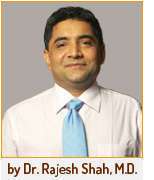
Homeopathic Treatment for Hallervorden-Spatz Disease
Hallervorden-Spatz disease (HSD) is a rare genetic disorder. It is characterized by progressive neurological dysfunction and loss of memory (dementia). It is a movement disorder that runs in families. It is first described by Hallervorden and Spatz in 1922.
Causes:
HSD is chiefly genetic, linked to chromosome 20. It is due to the defect in the gene that makes a protein called pantothenate kinase 2 (PANK 2). Recently, this disease is termed pantothenate kinase-associated neurodegeneration.
Symptoms:
Symptoms usually start appearing in late childhood.
- Involuntary muscle contractions (dystonia)
- Involuntary, jerky muscle movements (Choreoathetosis)
- Muscle rigidity
- Tremors
- Uncoordinated muscle movements (ataxia)
- Convulsions
- Loss of memory
- Disorientation
- Confusion
- Speech difficulty (dysarthria)
Diagnosis:
- Clinical signs and symptoms
- MRI of the brain - may show iron deposits in Basal Ganglia
- Genetic tests - for PANK2
Prognosis:
Prognosis is usually poor. Death usually occurs 10 years after the onset of the disease.
Treatment:
Treatment of HSD is usually symptomatic and supportive.
- Physiotherapy
- Speech therapy
- Occupational therapy
Homeopathic Treatment for Hallervorden Spatz
Homeopathy can be administered as supportive therapy along with physiotherapy, speech therapy, and occupational therapy. Homeopathy can help in improving the general well-being and vitality of the patient. Needless to say, homeopathic treatment is without any side effects whatsoever. At Life Force, we have registered and treated only one case so far (July 2011); and two more cases in June 2017.
A Case of Hallervorden-Spatz disease (HSD) at Life Force
A father of an 11 years old boy, patient reference No. 16528, suffering from the rare disease of Hallervorden Spatz reported at Life Force on 24th July. Son was suffering from the age of 8 months. He was in a coma when his father approached Dr. Rajesh Shah at Life Force. His father gave all the details.
Presenting complaints:
Symptoms started appearing when the patient was about one year of age.
- Difficulty in sitting and standing. He was able to sit for 10-15 minutes. Imbalance while walking.
- Difficulty in swallowing food (Dysphasia). He was on a liquid diet.
- Involuntary movements of hands and legs (Choreoathetosis)
- Slurred speech (Dysarthria)
These symptoms were there for 6-8 years. In the last two years, there was rapid progress in the disease, and the patient presented with the following symptoms.
- Loss of memory. (Could not recognize parents).
- Convulsions
- Coma
Treatment at Life Force:
After going through the details of the disease, Dr. Shah prescribed homeopathic medicines. It was made clear that homeopathic medicines in such cases can be prescribed as a supportive line of treatment.
Written & Approved by-
Dr. Rajesh Shah
M.D. (Hom.)